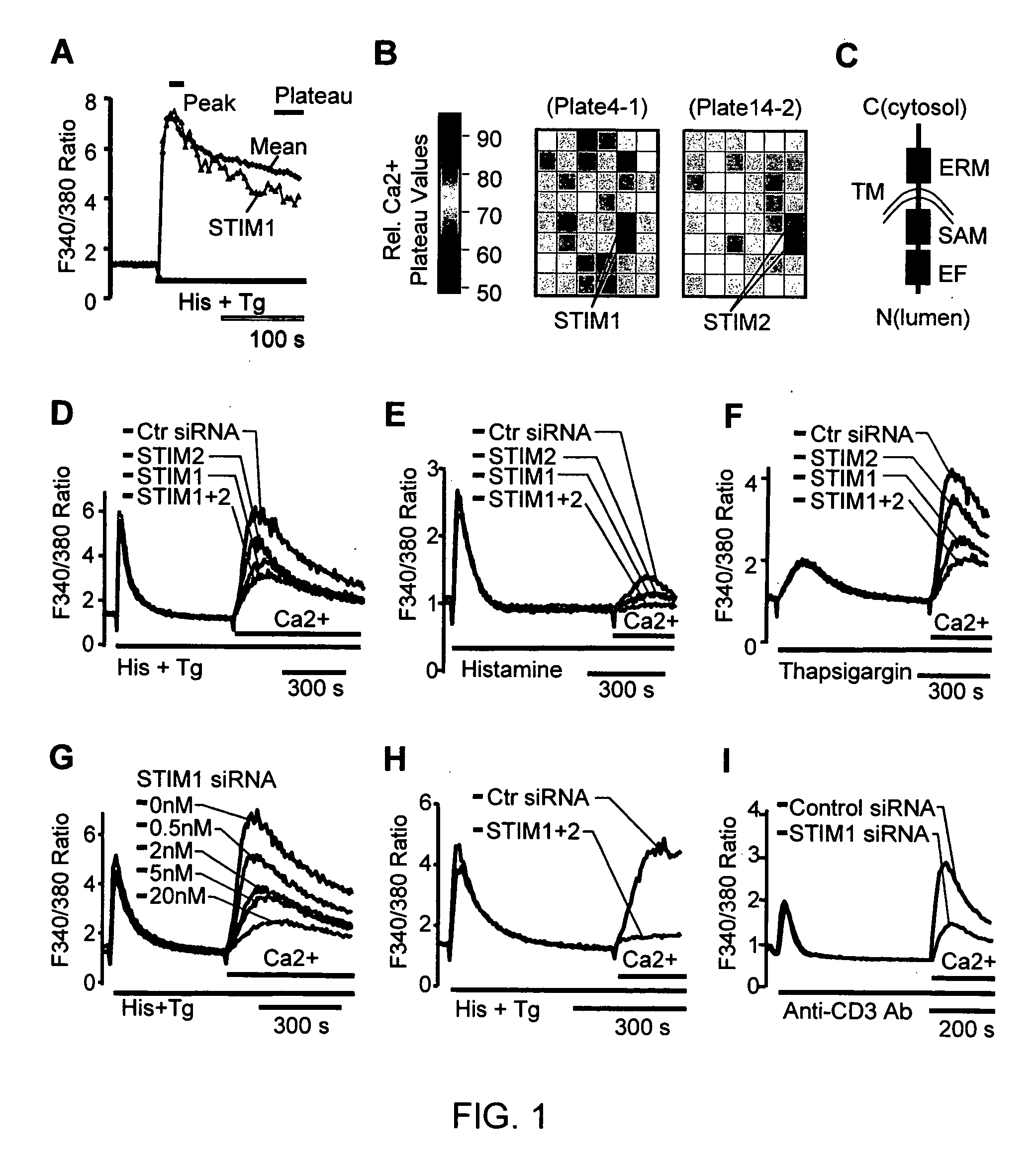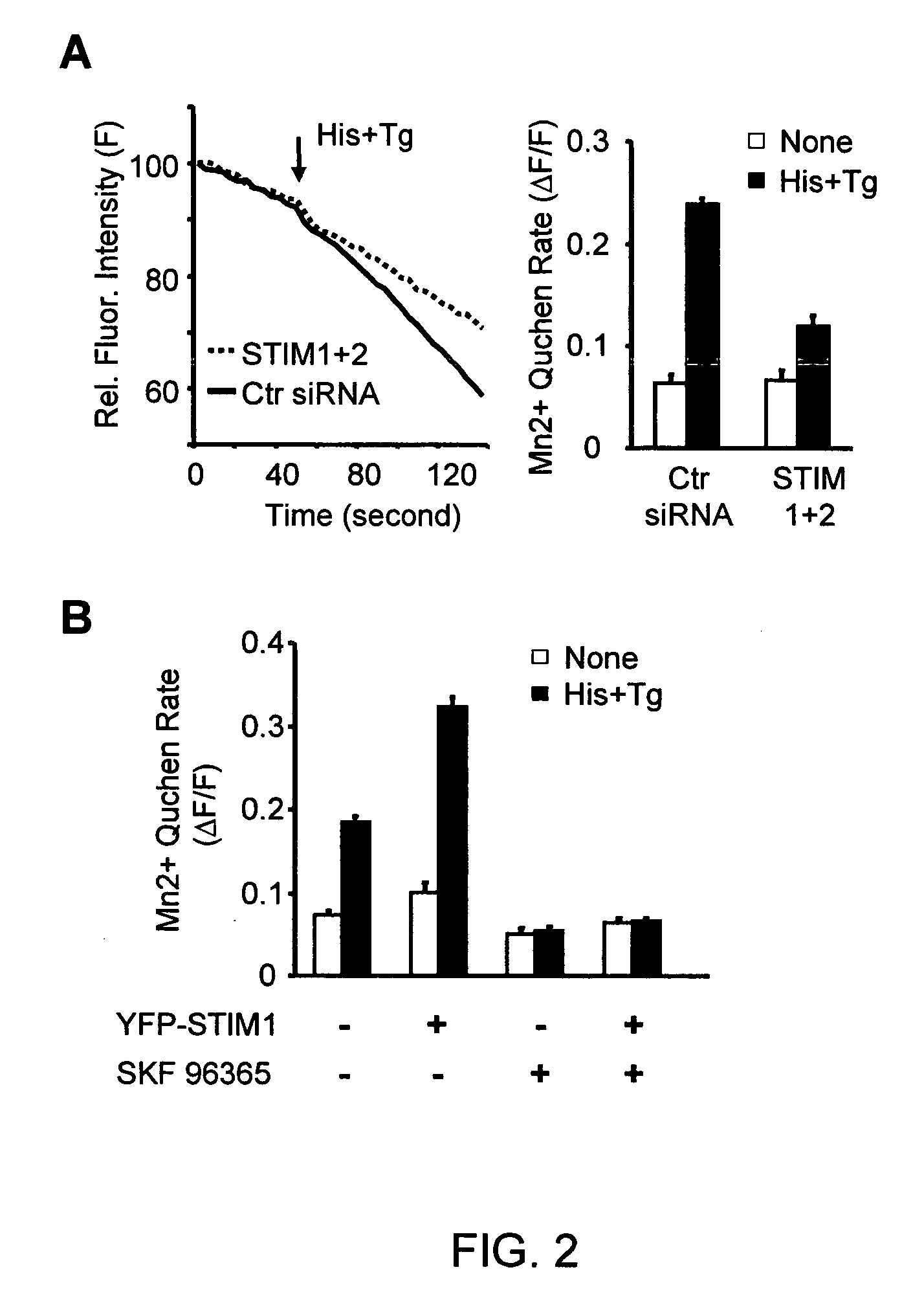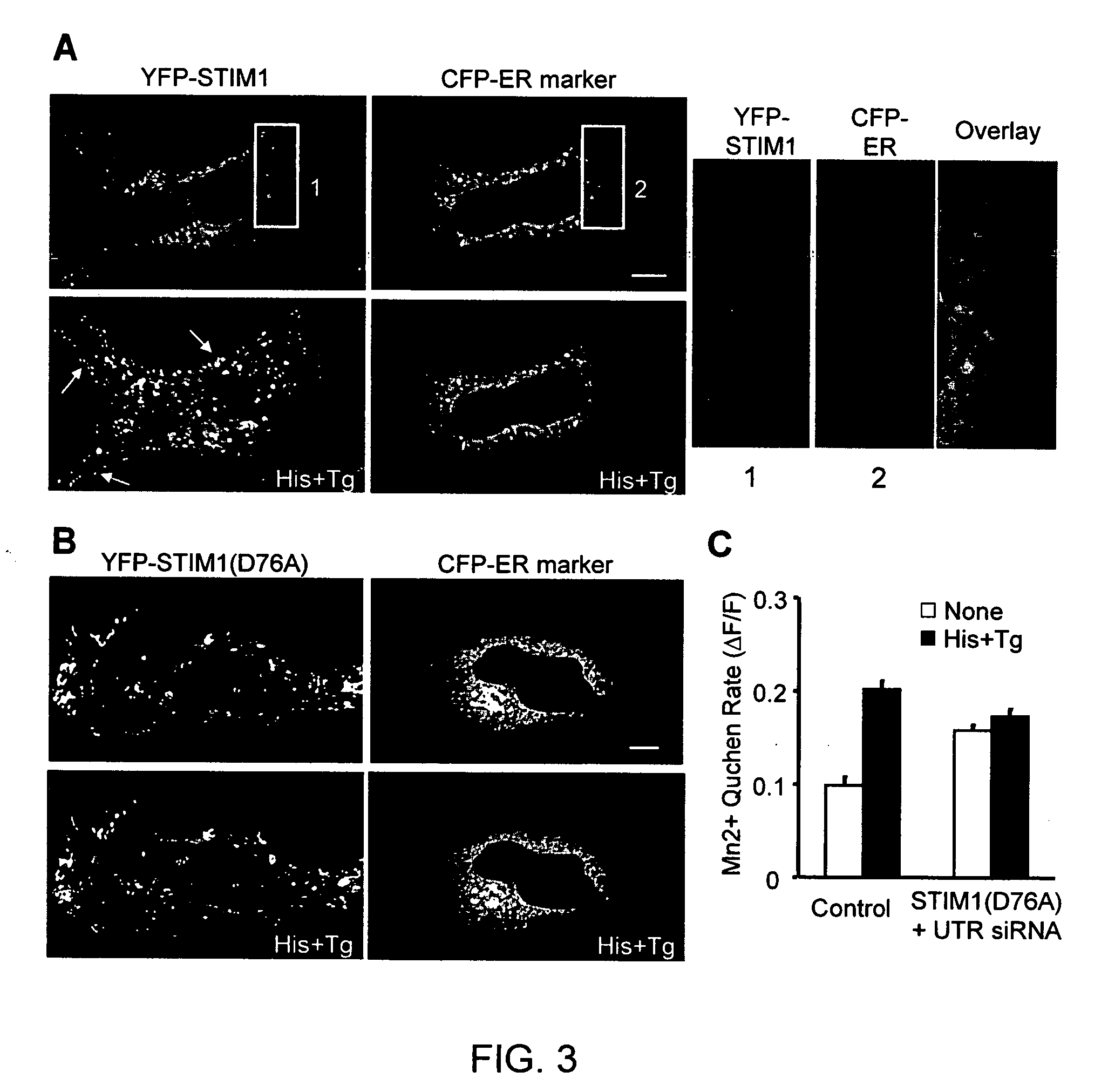Calcium biosensor polypeptides and methods of use
- Summary
- Abstract
- Description
- Claims
- Application Information
AI Technical Summary
Benefits of technology
Problems solved by technology
Method used
Image
Examples
example 1
Identification of STIM1 and STIM2 as SOC Influx Mediators
[0172] To identify proteins involved in the SOC influx pathway, 2,304 proteins were selected that contain known signaling domains from the NCBI database and diced siRNAs were generated in vitro against each of the targets. Their role in Ca2+ signaling was tested using a kinetic Ca2+ screen in an automated microplate reader. Stimulation of HeLa cells with histamine and thapsigargin leads to an initial peak in cytosolic Ca2+ levels followed by a plateau. The sustained plateau level is indicative of induced SOC influx. Thus, by monitoring which siRNA reduces the sustained plateau phase without changing the initial peak response, proteins that mediate SOC influx could be identified.
[0173] Using visual inspection of the Ca2+ time-courses (FIG. 1, Panel A) and comparing the relative Ca2+ plateau values (FIG. 1, Panel B), the siRNAs targeting the gene products STIM (stromal interaction molecule) 1 and STIM2 stood out in their abili...
example 2
Suppression of CA2+ Influx in STIM Knockdown Cells
[0174] To confirm that STIM1 and STIM2 are required for the SOC influx pathway, a “Ca2+ add-back” experiment was performed in which Ca2+ stores were first depleted in the absence of extracellular Ca2+ with histamine and thapsigargin. Extracellular Ca2+ was then added back to monitor the Ca2+ influx. In HeLa cells transfected with siRNA against STIM1, STIM2 or both, a significant suppression of Ca2+ influx was observed (FIG. 1, Panel D). The same results were obtained when knockdown cells were stimulated with either histamine alone (FIG. 1, Panel E) or thapsigargin alone (FIG. 1, Panel F). siRNAs against the 3′ un-translated regions (UTR) of both STIM1 and STIM2 as well as three synthesized individual siRNAs against STIM1 led to a similar suppression of Ca2+ influx (FIG. 5, Panel A). With additional controls, there was no significant difference in membrane potential changes or residual Ca2+ in the store between control and STIM1 knoc...
example 3
Suppression of NF-AT Translocation and TCR-Triggered CA2+ Influx by STIM1 SIRNA
[0175] NF-AT is a transcription factor that is activated in response to sustained Ca2+ signals (Crabtree et al., (2002) Cell 109, S67-79; Beals et al., (1997) Genes Dev. 11, 824-34). The activation of NF-AT was monitored to test for a functional consequence of the reduction in SOC influx. Consistent with a functional relevance of STIM1 in NF-AT activation, the translocation of YFP-NF-ATc1 to the nucleus was nearly completely reduced in Ca2+ store-depleted HeLa cells transfected with siRNAs against STIM1 compared to control siRNA (FIG. 5, Panel D). SOC influx has been shown to be required for T-cell activation (Lewis et al., (2001) Annu. Rev. Immunol. 19, 497-521; Schwartz et al., (2003) Annu. Rev. Immunol. 21, 305-34). Thus, the effect of STIM1 on Ca2+ influx in a Jurkat T lymphocyte model was examined. This is of therapeutic interest, since a recent study suggested that small molecules that inhibit the ...
PUM
| Property | Measurement | Unit |
|---|---|---|
| Fluorescence | aaaaa | aaaaa |
| Level | aaaaa | aaaaa |
| Affinity | aaaaa | aaaaa |
Abstract
Description
Claims
Application Information
 Login to View More
Login to View More - R&D
- Intellectual Property
- Life Sciences
- Materials
- Tech Scout
- Unparalleled Data Quality
- Higher Quality Content
- 60% Fewer Hallucinations
Browse by: Latest US Patents, China's latest patents, Technical Efficacy Thesaurus, Application Domain, Technology Topic, Popular Technical Reports.
© 2025 PatSnap. All rights reserved.Legal|Privacy policy|Modern Slavery Act Transparency Statement|Sitemap|About US| Contact US: help@patsnap.com



